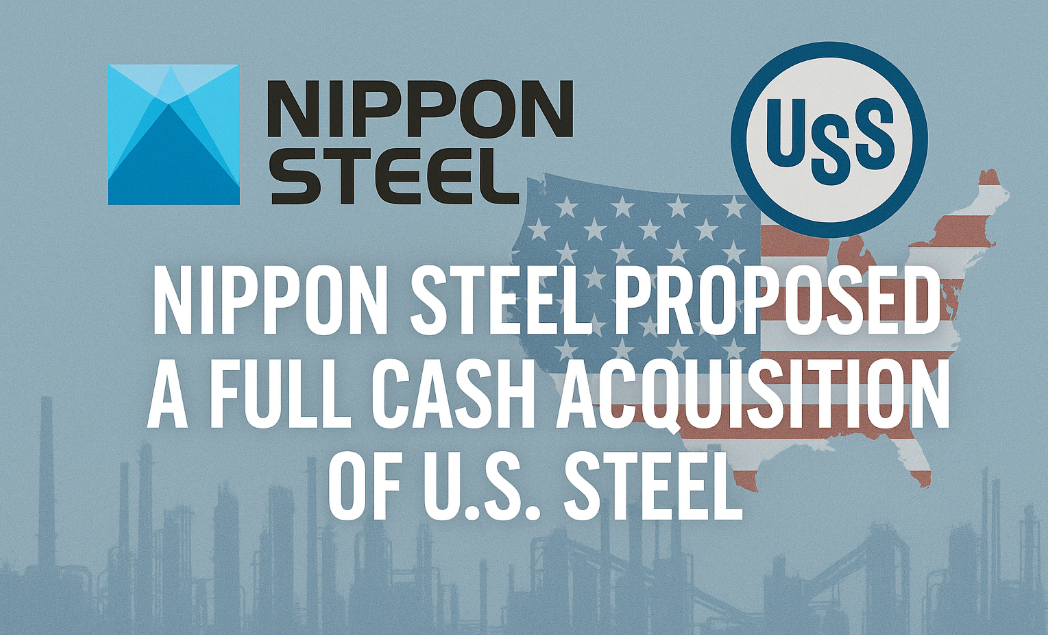In a dramatic shift from a $14.5 billion full acquisition to a politically acceptable “strategic partnership,” Nippon Steel’s engagement with U.S. Steel now reflects not just corporate ambition—but also the evolving landscape of global economic alliances. Here’s a deep dive into what changed, why it matters, and what’s next.
Background: A Historic Acquisition Turns Political
In December 2023, Nippon Steel proposed a full cash acquisition of U.S. Steel—an iconic American company—seeking to create the world’s largest steelmaker. The move promised technological synergies, access to the U.S. market, and enhanced global competitiveness.
However, resistance swiftly emerged from U.S. labor unions, members of Congress, and national security circles, raising concerns about foreign ownership of strategic assets.
May 2025 Shift: Trump Endorses a “Planned Partnership”
On May 23, 2025, former President Donald Trump publicly approved a revised framework, describing it as a “planned partnership” rather than a foreign takeover. Key concessions included:
- U.S. Steel retains its headquarters in Pittsburgh
- 70,000 jobs promised in the U.S. under joint operations
- Nippon Steel positions itself as a major investor, not an owner
The political tone of the deal softened significantly, boosting U.S. Steel’s stock and tempering domestic opposition.
Japan’s Strategic Interests
From Japan’s perspective, the partnership aligns with national goals of economic security and technological outreach. Benefits include:
- Secured U.S. market access despite rising protectionism
- Deployment of green steel and decarbonization technologies
- Hedging yen exposure by acquiring dollar-denominated assets
- Strengthening supply chain resilience amid U.S.-China tensions
Risks and Challenges Ahead
Despite political green lights, challenges remain:
- Unions like United Steelworkers remain cautious
- Legal clarity on governance and investment control is still pending
- Future U.S. leadership could shift policy tone again
- Cultural and operational integration across borders may prove difficult
Conclusion: A 21st-Century Industrial Alliance
This isn’t just an M&A case—it’s an experiment in economic diplomacy. If successful, the Nippon Steel–U.S. Steel partnership could serve as a model for cross-border industrial alliances that respect political sensitivities while enabling innovation and growth.
But the stakes are high. A breakdown would confirm the limits of globalization in a populist era.
Sources
- Reuters: Trump supports Nippon Steel’s bid for US Steel, shares jump 21% | Reuters
- New York Post: Japan-based Nippon Steel can invest in US Steel, Trump says
- Investopedia: US Steel Stock Soars as Trump OKs Nippon Steel ‘Partnership’
- The Guardian: Trump warms to Nippon Steel, backing ‘partnership’ with US Steel | Trump administration | The Guardian
Analytical Report (Economic Perspective)
“Steel, Sovereignty, and Strategy: Donald Trump’s Likely Opposition to the Nippon Steel–U.S. Steel Deal”
Executive Summary:
The proposed acquisition of U.S. Steel by Japan’s Nippon Steel has reignited deep-seated concerns over foreign ownership of strategic American assets. While the deal may be economically rational from a global perspective, it sharply conflicts with Donald Trump’s long-standing nationalist and protectionist ideology. This report analyzes Trump’s likely position, motivations, and potential political strategies tied to the deal.
1. Trump’s Core Ideological Principles
| Principle | Description |
|---|---|
| America First | Prioritizing American ownership, jobs, and production |
| Strategic Industry Sovereignty | Steel is treated as a national security asset |
| Anti-Foreign Takeover Stance | Consistently skeptical of foreign buyouts, even by U.S. allies |
| Populist Appeal to Rust Belt | Leveraging “Made in America” as a campaign cornerstone |
2. Why Trump Is Likely to Oppose the Deal
- Symbolic Importance of U.S. Steel
U.S. Steel is more than a company—it’s a symbol of American industrial might and labor history. Letting it be acquired by a foreign firm, even a close ally, runs counter to Trump’s narrative. - Strategic Timing: Election Year 2024–2025
With Trump seeking a return to the White House, opposing this deal gives him a chance to align with labor unions, strengthen his Rust Belt base, and challenge the Biden administration on perceived economic nationalism failures. - Policy Consistency
Trump previously enacted Section 232 steel tariffs and blocked foreign investments in critical sectors. This deal would be seen as undermining that legacy.
3. Political Implications
| Impact Area | Implication |
|---|---|
| Electoral Strategy | Rallying support in key swing states like Pennsylvania and Ohio |
| Foreign Policy Message | Reinforcing “economic sovereignty” in U.S. foreign investment policy |
| Trade Nationalism | Reigniting “Buy American, Hire American” as a central campaign message |
Conclusion:
Trump is likely to not only oppose the Nippon Steel–U.S. Steel deal but actively campaign against it. His objection would be grounded in a potent mix of nationalism, economic populism, and strategic positioning ahead of the election.
🎙️ Simulated Trump Speech Draft
“Ladies and gentlemen,
U.S. Steel is a great American company. It built our cities, armed our troops, and gave millions of workers their shot at the American Dream. And now, the Biden administration wants to sell it — to Japan. Can you believe that?
I like Japan. I do. Great people. Great cars. But America’s steel belongs to Americans. Not foreign nations. Not globalists.
When I was President, we protected our workers. We put tariffs on foreign steel. We brought jobs back. And we said: Made in America, built by Americans.
This deal? It’s a disaster.
It threatens our national security, our jobs, and our future.And let me tell you something:
In 2025, we’re going to stop this nonsense.
We’ll keep our steel, protect our sovereignty, and put America First — again.”Thank you. God bless you. And God bless the United States of America.”


